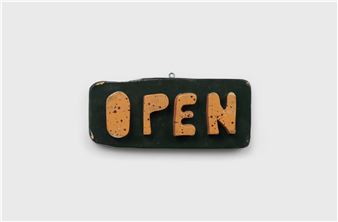Tech culture has taken a conspicuously dark turn. With an economy of scale allowing influence over billions of users, opportunism seems to have eclipsed feel-good prophesies about making the world a better place. Infiltrating our political system, the "move fast and break things" motto currently ricochets throughout government agencies, with "efficiency standards" invoked to flatten longstanding institutions whose public focus might conflict with private interests.
Tracing an arc that began with the era of smart phone's displacement of flip phones, Social Photography's ambivalent relationship with digital culture is manifested in its connecting simple digital tools (jpgs and emails) with prints produced for an in-person exhibition. Presented in a grid in the order that they're received, the gallery viewing experience, in contrast to the fleeting, unidirectional social media scroll, relies on viewer instincts, which takes their eyes across the grid as their drawn in by visual interest free of algorithmic direction.
With a recent modest revival of flip phone use indicating an urge to “unplug” from the incessant demands of the digital sphere, the original ethos of the Social Photography show may be beginning to come full circle. Initially meant as an alternative to the conventional benefit raffle shows that source artworks donated by artists, Social Photography both limited the demand on artists to that of emailing an image and signature, while lending coherence to the exhibition through a consistency of the formatting of each image through presenting the whole in a grid.
Allowing for a presentation of open-ended subjects and imagery reflecting the wide range of participants' interests as well as societal trends that might reflect current events, Social Photography has gradually become an informal ten-plus year archive of what people photograph on their phones, while, through sales of print editions, helping provide needed funding for upcoming programming.
With this eleventh version taking place during a seismic shift in governance that seems designed to shock the system through a series of rapid, destabilizing actions while wholesale institutional transformation is attempted at lighting speed, the concern among many is palpable. While events continue to unfold and responses are taking shape, the fostering and maintaining of locality and cultural communities that offer in-person engagement seems critical in the face of sweeping, dramatic change, and we remain enormously grateful to all participants and supporters who help make Social Photography and on our ongoing work at
Carriage Trade possible


 ARTISTS
ARTISTS













